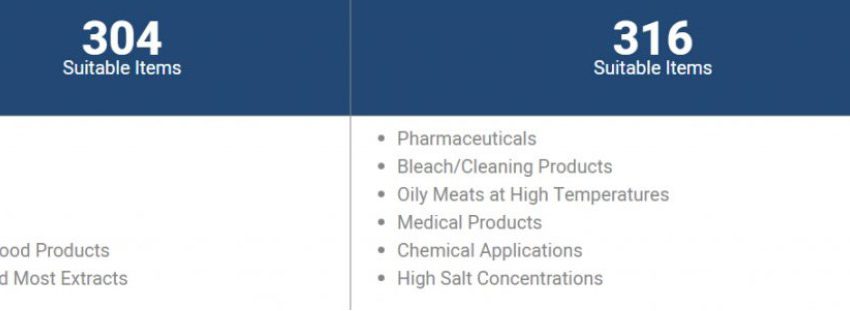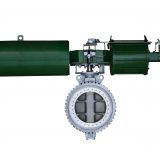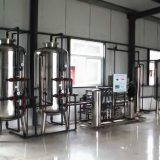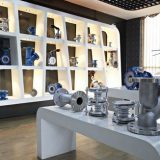What’s the difference between 304 and 316 stainless steel alloy?
304 stainless steel
304 stainless steel is the most common steel, it has good corrosion resistance, heat resistance, low-temperature strength, and mechanical properties; stamping, bending and other hot working properties are good.
Applications
Housewares (tableware, cabinets, indoor pipelines, water heaters, boilers, bathtubs)
Automobile accessories (windshield wipers, mufflers, molds)
Medical Appliances, Building Materials, Chemistry, Food Industry, Agriculture, Ship Parts
304L Stainless Steel
As a low carbon 304 steel, its corrosion resistance is just similar to 304 under normal conditions, but after welding or stress relief, its grain boundary corrosion resistance is excellent. Without heat treatment, it can also maintain good corrosion resistance.
Applications
It is applied to field open-air machines in chemical, coal, and petroleum industries with high grain boundary corrosion resistance, heat-resistant parts of building materials, and parts with difficulty in heat treatment.

316 Stainless Steel
316 stainless steel has excellent corrosion resistance, atmospheric corrosion resistance, and high-temperature strength due to the addition of molybdenum. It can be used under harsh conditions and has excellent work hardening (non-magnetic).
Application
Seawater equipment, chemical, dyestuff, papermaking, oxalic acid, fertilizer, and other production equipment; photography, food industry, coastal facilities, ropes, CD rods, bolts, nuts.
316L Stainless Steel
As a low carbon series of 316 steel, besides having the same characteristics as 316 steel, it has excellent grain boundary corrosion resistance.
Applications
Products with special requirements for grain boundary corrosion resistance
Performance comparison
Chemical composition
316 and 316L stainless steels are molybdenum-containing stainless steels. The molybdenum content of 316L stainless steel is slightly higher than that of 316 stainless steel. Because of molybdenum in steel, the overall performance of 316L stainless steel is better than that of 310 and 304 stainless steel. At high temperatures, 316 stainless steel has a wide range of uses when the concentration of sulphuric acid is lower than 15% and higher than 85%. 316 stainless steel also has good chloride corrosion performance, so it is usually used in the marine environment. The maximum carbon content of 316L stainless steel is 0.03, which can be used in applications where annealing cannot be carried out after welding and maximum corrosion resistance is required.
Corrosion resistance
The corrosion resistance of 316 stainless steel is better than 304 stainless steel. It has good corrosion resistance in pulp and paper production. Moreover, 316 stainless steel is also resistant to marine and corrosive industrial atmospheric erosion.
Generally speaking, 304 and 316 stainless steel have little difference in chemical corrosion resistance, but they are different in some specific media.
Initially, 304 stainless steel butterfly valve was developed, which is more sensitive to pitting corrosion under certain conditions. An additional 2-3% molybdenum can reduce this sensitivity, which gives rise to 316. In addition, this extra molybdenum can also reduce the corrosion of some thermogenic acids.
316 stainless steel has almost become the standard material in the food and beverage industry. The price of 316 stainless steel is more expensive than 304 stainless steel due to the shortage of molybdenum and the higher nickel content in 316 stainless steel worldwide.
Point corrosion is a phenomenon mainly caused by deposition corrosion on stainless steel surface, which is due to lack of oxygen and can not form chromium oxide protective layer.
Especially in small valves, the possibility of deposition on the valve plate is very small, so pitting corrosion rarely occurs.
In all kinds of water media, 304 and 316 stainless steel have almost the same corrosion resistance, unless the chloride ion content in the medium is very high, 316 stainless steel is more suitable.
In most cases, the corrosion resistance of 304 and 316 stainless steel is not much different, but in some cases, it may be very different, which needs specific analysis. Generally speaking, valve users should have a good idea, because they will choose the material of container and pipeline according to the medium, and do not recommend materials to users.
Heat resistance
316 stainless steel has good oxidation resistance in discontinuous use below 1600 degrees and continuous use below 1700 degrees. In the range of 800-1575 degrees, it is better not to continuously act on 316 stainless steel, but when 316 stainless steel is continuously used outside this temperature range, the stainless steel has good heat resistance. The carbide precipitation resistance of 316L stainless steel is better than that of 316 stainless steel, which can be used in the above temperature range.
Heat treatment
It is annealed in the temperature range 1850-2050 degrees, then annealed rapidly, and then cooled rapidly. 316 stainless steel cannot be hardened by superheating treatment.
Welding
316 stainless steel has good weldability. All standard welding methods can be used for welding. According to the use, 316Cb, 316L or 309Cb stainless steel filler rod or electrode can be used for welding. In order to obtain the best corrosion resistance, the welded section of 316 stainless steel needs to be annealed after welding. If 316L stainless steel is used, post-weld annealing is not required.
For more information, please visit http://www.adamantvalves.com/





